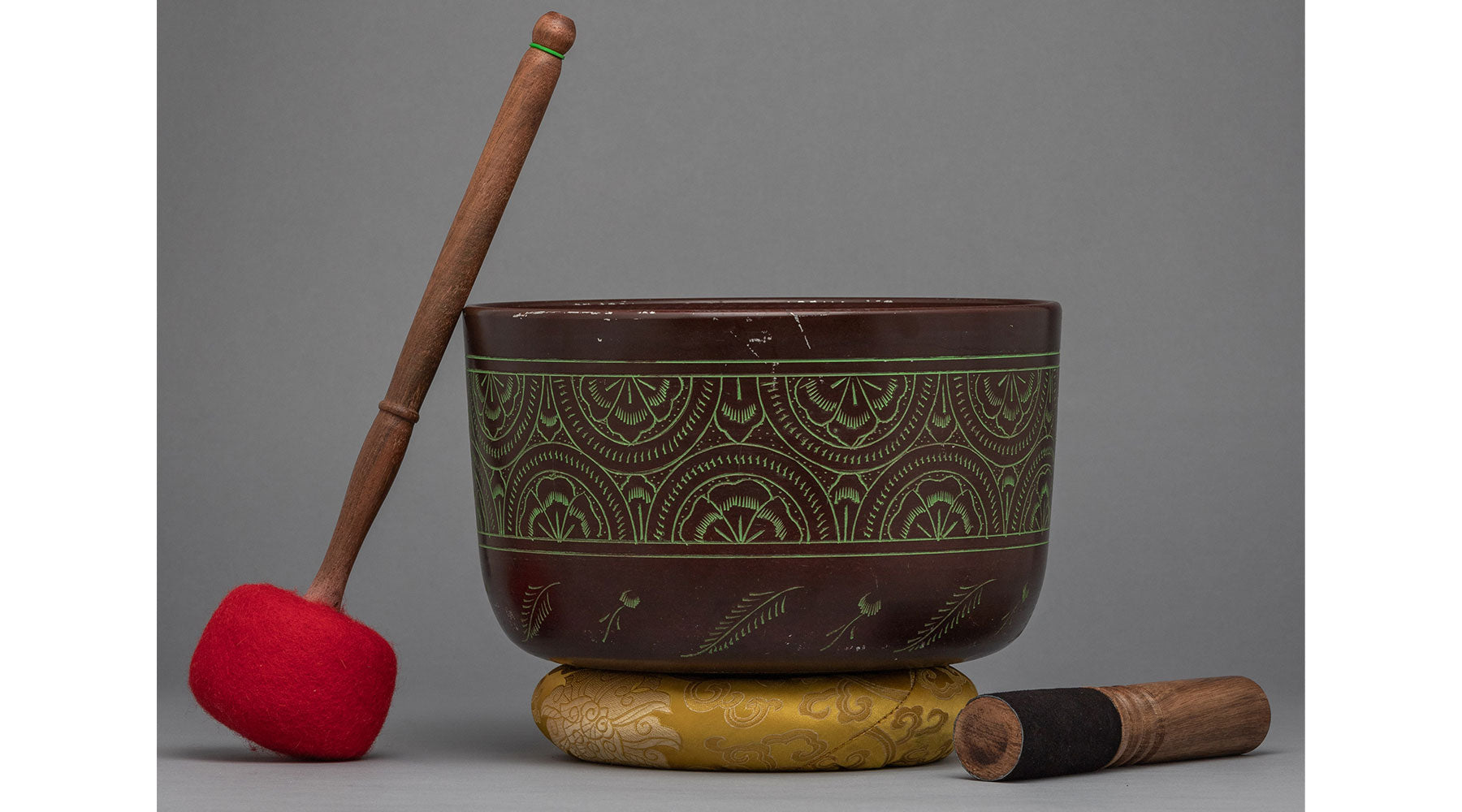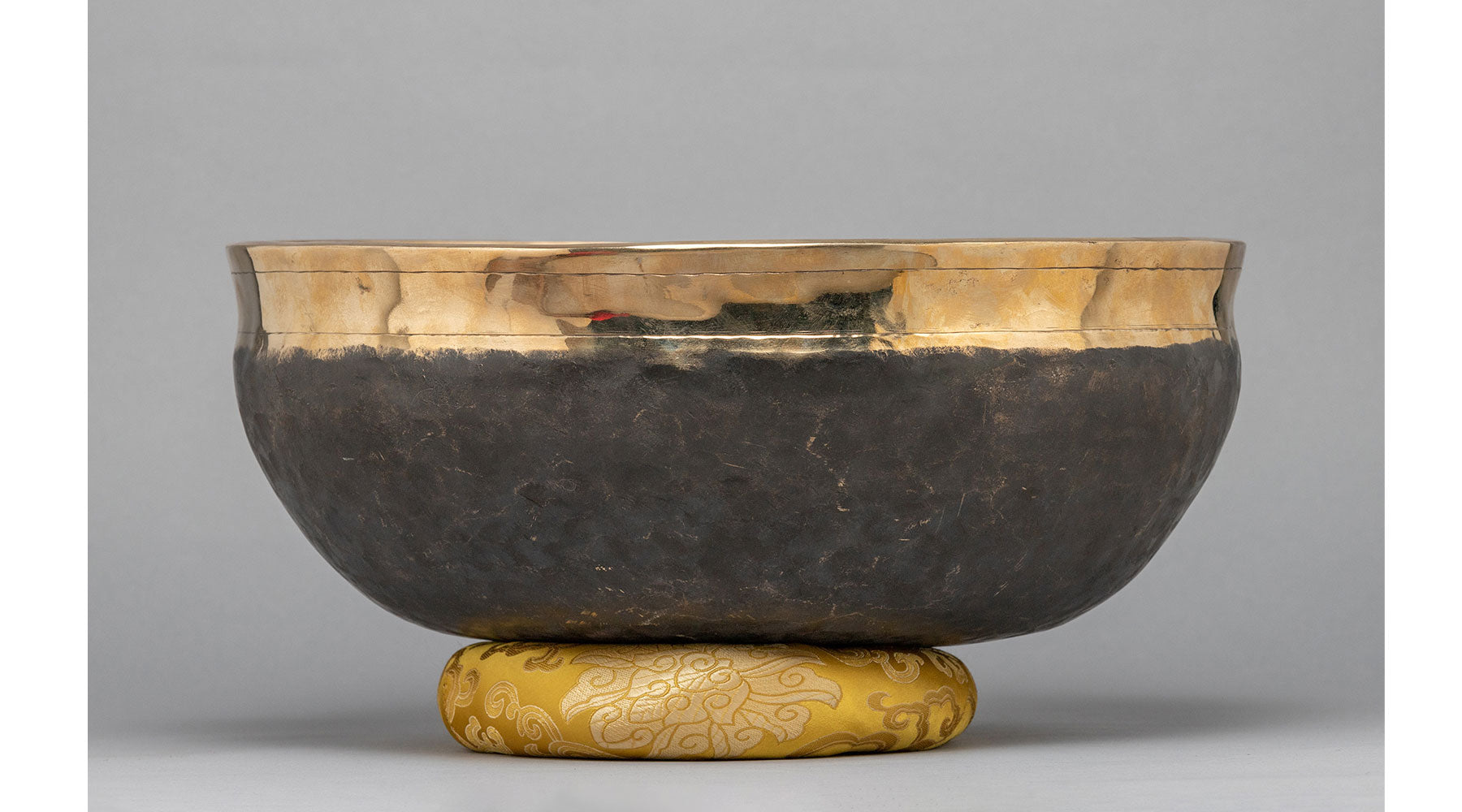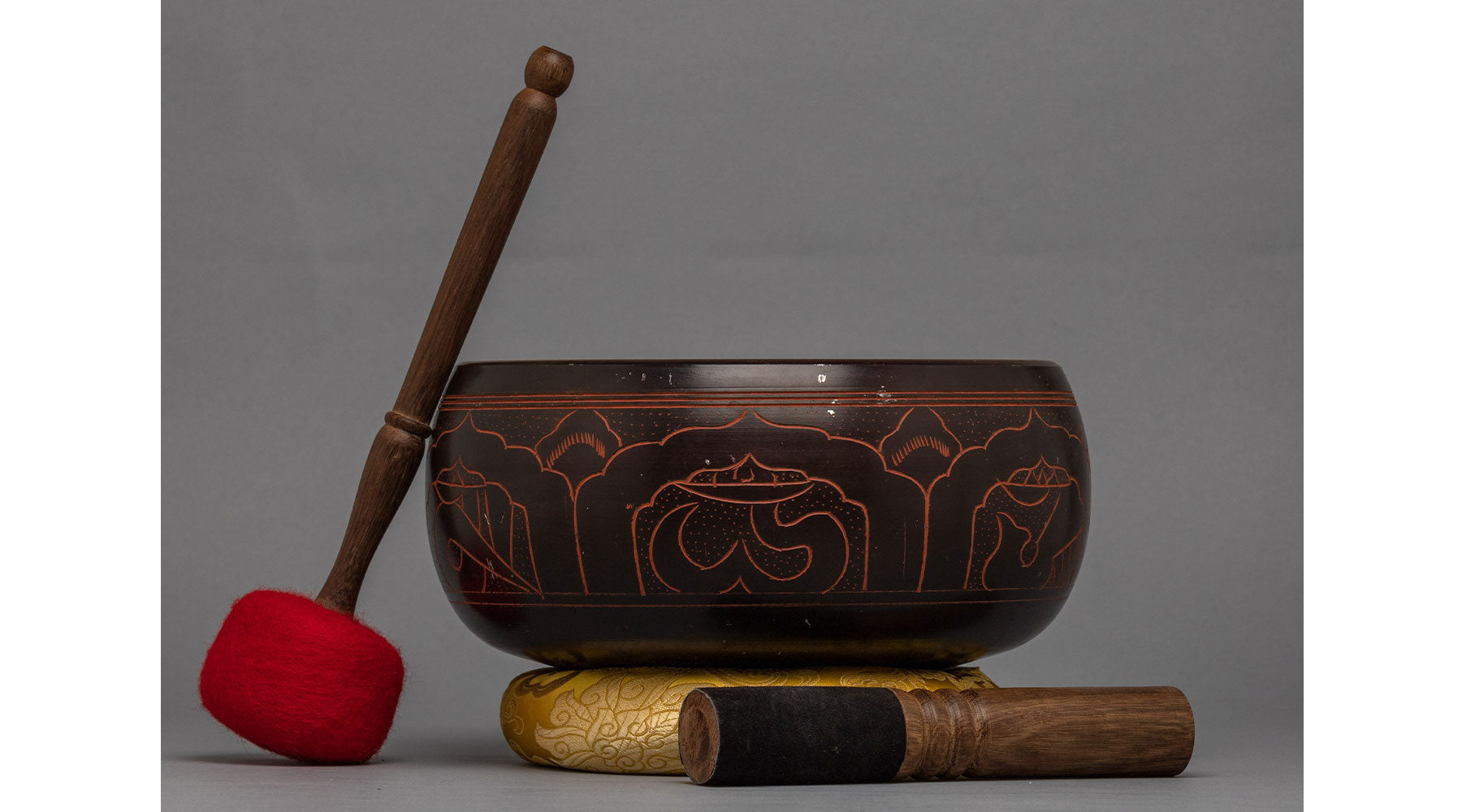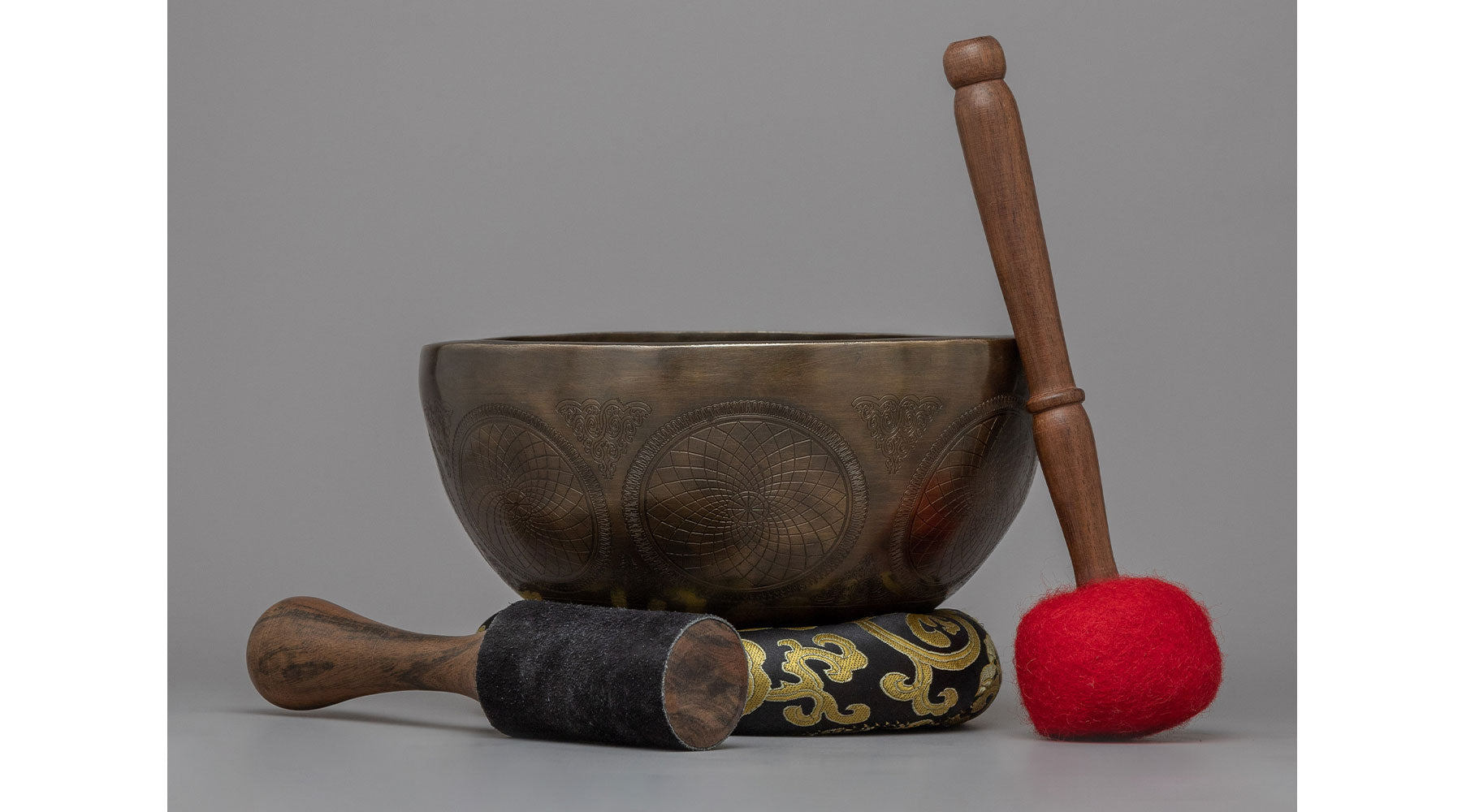The Spiritual Significance of Singing Bowls
Singing Bowl is also known as the Standing Bell or Resting Bell. Singing bowl treatment has long promoted physical and spiritual relaxation, internal harmony, and well-being. The therapy encourages spiritual enlightenment while also providing significant physiological benefits. It also facilitates the writing of sacred music for various ceremonial occasions.
A Handmade Singing Bowl is a form of standing bell in the Buddhist tradition that produces a soothing melodic tone. This beautiful singing sound promotes relaxation, reduces stress, and improves mental clarity. Singing bowls are used by Buddhists in a variety of religious rites, meditations, and chanting.
History of Singing Bowls:
Buddhist Singing bowls have been around Since the time of the Historical Buddha, according to traditional Tibetan teachings. Singing bowls provide lovely sound that induces deep, contemplative, and tranquil feelings. Yoga, reiki, music therapy, and sound healing all use singing bowls. The rich harmonies generated by singing bowls aid in chakra balancing, stress reduction, and holistic healing.
Tibetan Singing Bowls produce a serene sound by rubbing it with a mallet. Practitioners believe these singing bowls may treat various diseases and aid mental stability. Copper, lead, silver, tin, iron, or gold alloy metals are standard components for making these singing bowls. Pure crystal singing bowls are also becoming increasingly popular.
Singing bowls were not the only instruments used by people in the past. They employed them for various household chores, daily cooking pots, and water containers. Singing bowls were used by people as a healing tool when they were ill. Leaving water in the bowls all night and drinking it first thing in the morning was a common practice. They also relied on a variety of healing instruments, such as drums and the Bajra, a pointed object resembling a dart that was used by witch doctors and is still in use in Nepal.
Different types of Singing Bowls:
- Thadobati
- Jambati
- Ultabati
- Naga or Pedestal
- Mani
- Lingam
- Manipuri
Thadobati: Unlock Harmony with Thadobati's Song
Click here to view our Singing Bowl Set
Thadobati Singing Bowls is one of the oldest designed bowls on the market. The ancient Thadobati singing bowls are said to originate from the 15th century. These singing bowls are the first option for a person to purchase since they are reasonably affordable and have a calming sound.
Usually, these bowls have sloping sides that gently curve inward and a wide, flat bottom. When played, they frequently produce a deep, rich tone. Thadobati bowls are a subtype of hand-hammered singing bowls and are known for their distinctive shape and sound.
Jambati: Dive into Tranquility with Jambati's Tune
Jambati singing bowls are among the most gorgeous and substantial types of singing bowls. The Jambati singing bowl demands the skills of four or five artisans. This sort of antique singing bowl, which may still be seen today, is said to have been produced in the 17th or 18th centuries.
In comparison to other singing bowls, jambati bowls usually have a more rounded and symmetrical shape. Their sides are straighter and gently curve outward, and they frequently have a wide, flat bottom. Typically, the bowl's lip or rim is wide and clearly defined.
Jambati bowls have a variety of harmonics and when they are played, they produce a rich, complex sound. These bowls are popular for use in sound healing, meditation, and spiritual practices because of their calming and meditative vibrations and tones.
Ultabati: Experience Serenity in Ultabati's Echo
The features and design of the Ultabati Singing Bowl are unique. The tactile experience varies from smooth near the rim to rough with hammer markings further down due to its two opposing surfaces. The bowl's bottom may be purposefully made darker or preserved in its initial color. The bowl's aesthetic appeal can be enhanced by the addition of decorative concentric rings.
The Ultabati Singing Bowl has a soothing tone with long resonance and low tones when it is played. For those who practice meditation, sound therapy, or other spiritual activities, the Ultabati boRise to Enlightenment with Naga's Melodywl is a popular option due to its distinctive blend of design features and acoustic properties. The Ultabati Singing Bowl's allure in the field of healing and meditation is largely due to its skill and attention to detail, both in terms of appearance and sound production.
Naga or Pedestal: Rise to Enlightenment with Naga's Melody
The pedestal singing bowl's distinguishing feature is its distinctive construction, in which the bowl and its supporting pedestal are permanently forged together. This design distinguishes them, with the pedestal playing an important role in providing stability to the bowl. Despite their rarity, little is known about their origins and manufacturing dates, lending an air of mystery to these fascinating instruments.
These pedestal singing bowls provide an easy way to produce sound. These bowls are played around the rim rather than with a striker, as is the case with traditional singing bowls. The result is a resonant and brilliant sound that appeals to both sound therapists and healers. The pedestal enhances its appeal by allowing for a comfortable and controlled grip during therapeutic sessions.
These unique singing bowls are popular among sound therapists and healers not only for their distinct sound but also for the convenience provided by the pedestal. The ability to hold onto the pedestal while playing improves the therapeutic experience, making these bowls useful tools for relaxation, meditation, and sound therapy. The mystery surrounding their origins adds to their appeal in a variety of healing practices.
Mani: Awaken the Spirit with Mani's Resonance
The 16th and 18th centuries are thought to have seen the emergence of these singing bowls. The bowls' peculiar design makes them incredibly rare and challenging to find in showrooms. The thick, flat bottoms of these antiquated pieces taper slightly at the lips. With the lips extended and directed toward the bowl. We could see multiple concentric circles inside the bowl and a few lines just below the lips on the outside. Some bowls have a circle in the center of their outer walls. These are visible marks, but they disappear over time. These bowls produce a very loud and unique sound due to their design.
These bowls are unique not only in how they look but also in the amazing sound they make. When struck with a hardwood mallet, these bowls produce a loud and distinctive sound because of their unique design. The allure of these ancient singing bowls is further enhanced by the belief that striking them with such a mallet produces a soothing sound. Their unique sound, unique design, and historical heritage make them extremely valuable to collectors and enthusiasts.
Lingam: Journey to Inner Peace with Lingam's Chant
Originating in the 16th century, lingam singing bowls are recognizable by the characteristic lingam symbol placed in the middle of the inner bowl. These antiquated bowls were made especially for ritual and ceremonial uses. These singing bowls have a straightforward yet tasteful design, with smooth finishing walls and an inward-extending lip.
These bowls gain spiritual significance from the inclusion of the sacred lingam, a Hindu symbol for the divine energy of Lord Shiva. Lingam singing bowls have historical and cultural significance as instruments used in ceremonial practices; they are valued for their association with spiritual traditions and sacred rituals in addition to their uncomplicated appearance.
Manipuri: Embrace Bliss through Manipuri's Sound
The small rounded bottoms of Manipuri Singing Bowls make them easily identifiable. These bowls have different physical characteristics, such as thickness and thinness, and different designs, from plain to highly decorated. Manipuri bowls are renowned for their affordability and responsiveness. They typically have a diameter of 6 inches or less. These bowls tend to rotate in your hands, so it's best to play with them balanced on your fingertips.
Manipuri Singing Bowls that are embellished can have sun motifs or mala beads between lines that are slightly below the rim. The outside wall's concentric circles also add to the distinctive bowls' visual appeal. Manipuri bowls have a rich, resonant sound despite their smaller size, which makes them well-liked by practitioners and enthusiasts for both their aesthetic and acoustic attributes.
Why Using a Singing Bowl Can Make a Difference in Your Life
Medical professionals strongly recommend singing bowls due to their remarkable therapeutic properties. The vibrations of a singing bowl help the body in many ways, including reducing stress, enhancing the immune and neurological systems, preventing pain, battling depression, and balancing the chakras. Here's a complete guide on How to select a Singing Bowl
According to Ayurvedic medicine, illness often stems from internal discord. Ayurveda recognizes that matter is energy vibrating at different rates, and when the body and mind vibrate in harmony, changing these vibrations can change the structure of matter and promote health.
Singing bowl Meditation is a practice that fits these ideas. Alpha and theta brain waves are produced by the bowl's vibrations, which synchronize the right and left sides of the brain. The healing state that these waves produce is often referred to as being "in the zone." Balance is created by this synchronization, which makes deep meditation, intuitive understanding, and original thought possible.
Singing bowl therapy is in line with Ayurveda, fostering mental and physical health concurrently. The bowls' resonance serves as a channel for equilibrium, harmonizing with Ayurvedic medicine's all-encompassing strategy to bring about personal harmony.










